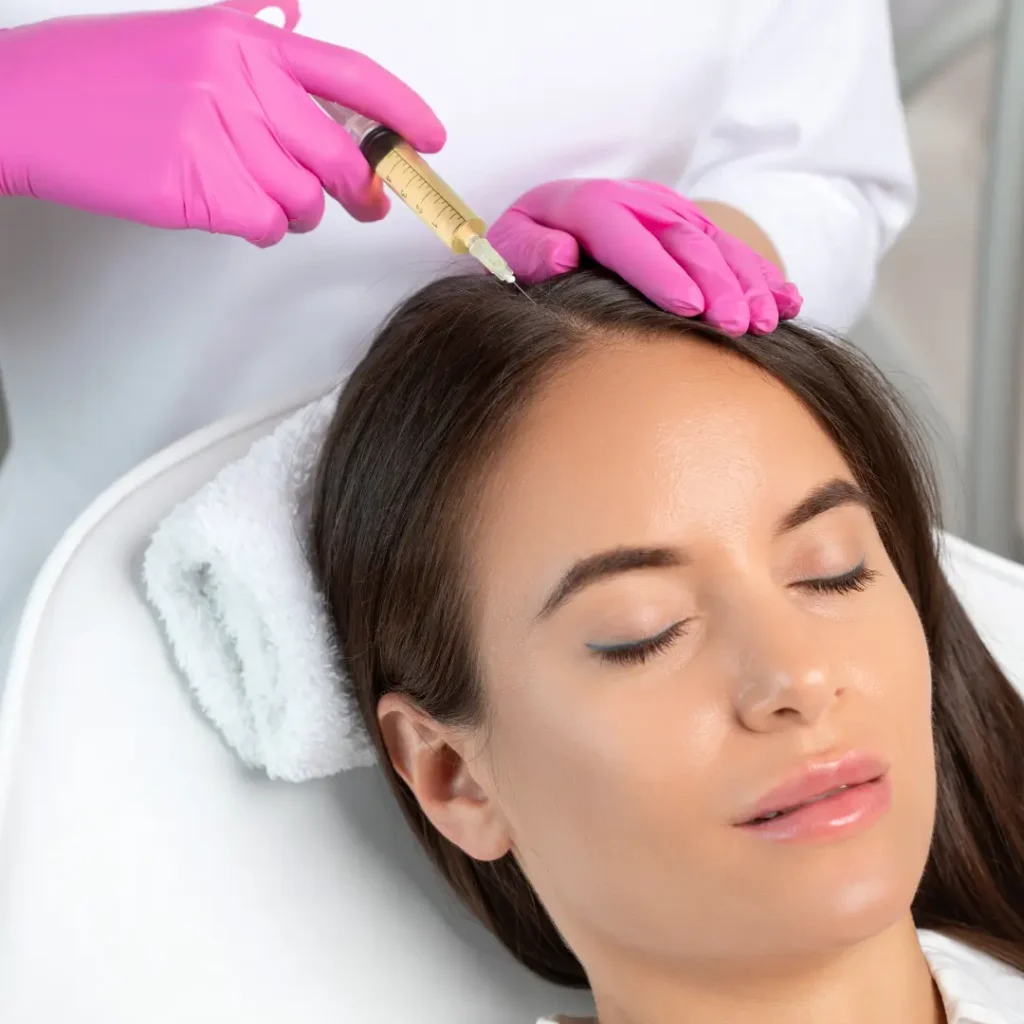South Korea’s reputation for cutting-edge cosmetic procedures is well-earned, particularly in the field of regenerative hair loss treatments. Korean clinics offer a variety of stem cell-based therapies, often tailored to individual needs. Understanding the different types of stem cells used in these treatments is key to appreciating their effectiveness and safet
Below are the most commonly used stem cell types in Korean hair restoration clinics:
1. Adipose-Derived Stem Cells (ADSCs)
Source: Patient’s own fat tissue (usually from the abdomen or thighs).
Why It’s Used:
ADSCs are rich in growth factors and cytokines that help activate dormant hair follicles, promote new blood vessel formation (angiogenesis), and reduce scalp inflammation. They also support the prolongation of the anagen (growth) phase of the hair cycle.
How It’s Applied in Korean Clinics:
- Liposuction is performed to extract a small amount of fat.
- The fat is processed to isolate stem cells.
- The purified ADSCs are then injected directly into the scalp.
- Often combined with microneedling or PRP for enhanced efficacy.
Advantages:
- Autologous (from the patient), so it’s highly biocompatible.
- Minimal risk of rejection or allergic reaction.
- Can be repeated periodically for sustained results.
2. Bone Marrow-Derived Stem Cells (BMSCs)
Source: Bone marrow, typically from the pelvic bone.
Why It’s Used:
BMSCs can differentiate into multiple cell types and have potent anti-inflammatory and tissue regenerative properties. While less commonly used than ADSCs, they are sometimes recommended for severe or treatment-resistant hair loss.
How It’s Applied in Korean Clinics:
- Stem cells are harvested and processed under sterile lab conditions.
- The resulting solution is applied to the scalp, often in conjunction with LLLT (low-level laser therapy) or dermal needling.
Advantages:
- Strong regenerative potential.
- Useful in advanced alopecia or scarring alopecia cases.
Limitations:
- More invasive extraction process.
- Higher cost compared to ADSCs.
3. Stem Cell-Conditioned Media (SC-CM)
Source: Growth factors and bioactive proteins secreted by cultured stem cells, often from umbilical cord or amniotic stem cells.
Why It’s Used:
Instead of injecting actual stem cells, clinics use the “media” in which stem cells have been cultured — a nutrient-dense fluid full of exosomes, peptides, and signaling proteins that influence follicular repair and scalp rejuvenation.
How It’s Applied in Korean Clinics:
- Applied topically or via microneedling.
- Sometimes used in mesotherapy or nano-needle injection techniques.
Advantages:
- Non-invasive and virtually painless.
- No need for fat or bone marrow extraction.
- Excellent for early-stage hair loss and preventative care.
Note: While this doesn’t involve live cells, the biological activity is still high, and the safety profile is excellent.
4. Umbilical Cord-Derived Mesenchymal Stem Cells (UC-MSCs)
Source: Donated umbilical cord tissue from healthy, screened births.
Why It’s Used:
UC-MSCs have an exceptionally high capacity for cellular regeneration and immunomodulation, making them ideal for rejuvenating hair follicles in patients who may not be candidates for autologous therapies.
How It’s Applied in Korean Clinics:
- Isolated and purified under GMP (Good Manufacturing Practice) standards.
- Injected into the scalp or used in a topical serum.
- Often offered in premium anti-aging hair programs.
Advantages:
- No need for patient tissue harvesting.
- Higher regenerative potential due to youthful cell origin.
- Preferred for older patients or those with poor fat stores.
Regulatory Note: These are tightly regulated and only offered in certified facilities.
5. Exosomes (Stem Cell-Derived Vesicles)
Source: Secreted by stem cells, particularly MSCs (mesenchymal stem cells).
Why It’s Used:
Exosomes are tiny nano-vesicles that carry proteins, mRNA, and microRNA — crucial for cell signaling. They help “instruct” the surrounding cells (like those in hair follicles) to regenerate and grow.
How It’s Applied in Korean Clinics:
- Delivered via microinjections or dermal stamping.
- Often paired with laser or radiofrequency treatments.
Advantages:
- Ultra-targeted, potent regenerative effects.
- No live cells, so extremely safe.
- Fast recovery and visible results in as little as 3–4 sessions.
Conclusion
Korean clinics tailor their hair regrowth treatments based on hair loss severity, scalp condition, age, and lifestyle. The most recommended stem cell therapies are ADSCs for natural autologous treatment, stem cell-conditioned media for non-invasive therapy, and exosome therapy for powerful cellular communication.
Choosing the right treatment involves a comprehensive consultation, often including digital scalp imaging, blood tests, and sometimes hormonal profiling to ensure personalized, effective car




